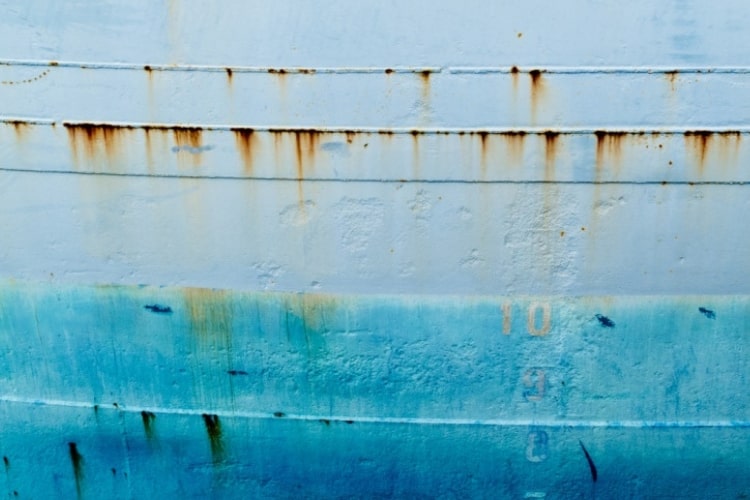Make Your Boat’s Gelcoat Shine
It is important to clean, restore and protect your fiberglass boat’s gelcoat. With water skiing, tubing, fishing and other water-based activities beckoning, it’s easy to put it off. However, it’s important to tackle oxidation and staining before it gets out of hand.
Gelcoat Staining and Oxidation
Over time, the sun’s ultraviolet (UV) rays may the surface of the gelcoat to oxidize. The once glossy surface may yellow and/or turn chalky. The porosity of a gelcoat surface makes it more prone to staining. Bird droppings, algae and rust all stain gelcoat.
If the hull of your fiberglass boat is stained, you are not alone. It is common for gelcoat to suffer from oxidation and yellowing. Light oxidation dulls the surface, while moderate to severe oxidation causes a chalky appearance.

Mineral and organic stains can also attack your gelcoat. Those black streaks on your boat are mineral stains. Rust is another mineral stain. Organic stains result from a wide range of contaminants, including bird droppings, leaves, spilled wine and coffee. Tannin from decaying lake vegetation also stains the gelcoat finish on a fiberglass boat.
Gelcoat Restoration
Fortunately, it is possible to restore color and clarity to most gelcoat surfaces. Use a specially formulated residue-free, low suds marine boat soap that’s better for the environment. Common dishwashing liquid may contain sulfonates that are not good for your gel coat.
Cleaning and polishing
Clean your boat’s gelcoat as needed with 303 Marine Multi-Surface Cleaner. Remove localized stains caused by mold, algae, exhaust or rust. Degreasers in the formulation tackle soot and other pollutants. Remember that gelcoat is somewhat porous. Prompt removal of bird droppings and other contaminants is particularly important.
Lemon juice and oxalic acid remove certain stains, but use them with caution. Avoid the use of bleach, acid or acetone-based cleaners. They contain chemicals that can weaken your boat’s gelcoat.

Use polishing and rubbing compounds to remove modest scratches and defects. Always use the finest grit product possible. This is because these compounds remove microscopic amounts of gelcoat. You don’t want to thin the gelcoat any more than necessary. Use 303 Finishing Polish (Step 3) for fine 2500-grit scratches. 303 Polish (Step 2) tackles moderate 2000-grit scratches. For more significant defects, including 1500-grit scratches, use 303 Compound (Step 1).
A dual-action polisher will help you cover larger areas. It will also deliver more consistent results than hand polishing. Only use GFCI-protected polishers if you are polishing your boat when it’s in the water. Cover the surface in a cross-hatch pattern: left and right, up and down. Even pressure is important to avoid gelcoat “burn-through.”
Repairs are still possible when the damage requires more than the use of rubbing or polishing compounds. Boating Magazine discusses gelcoat repair.
Protecting your gelcoat
Gold Eagle’s new 303 Touchless Sealant is marine safe. Powerful UV blockers resist fading and yellowing. The silicon dioxide formulation lasts up to twice as long as traditional waxes. 303 Touchless Sealant imparts a glossy shine to fiberglass gelcoat.
It is so easy to use. Away from direct sunlight, simply spray it on your clean gelcoat, rinse it off and wipe dry. Simple buffing with a dry cloth like a 303 Ultra Plush Microfiber Towel increases surface bonding and water repellency. Periodically apply the protectant to simplify future gelcoat maintenance. If you prefer a matte finish, choose 303 Marine Aerospace Protectant.





